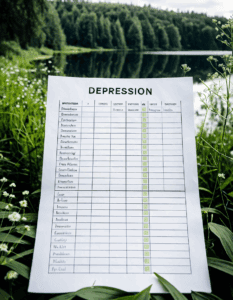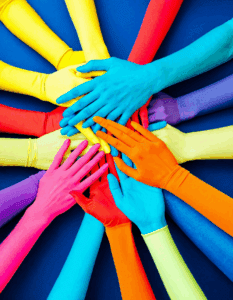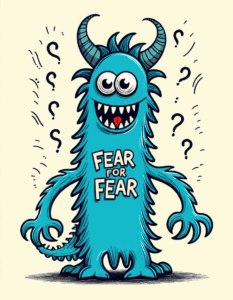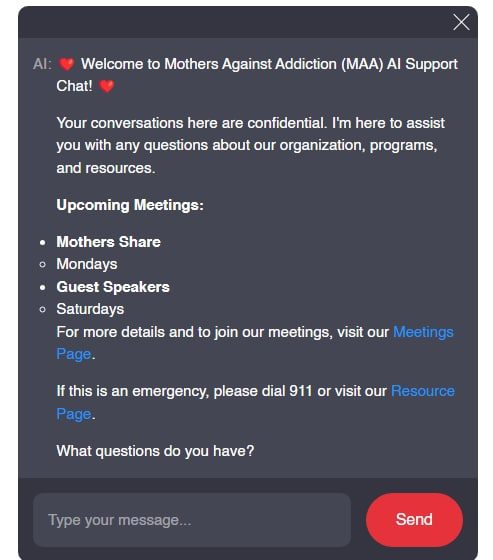Strategies for Overcoming Guilt and Shame
“`markdown
Understanding how to overcome guilt and shame is critical for parents dealing with their children’s addiction or the heart-wrenching loss that can accompany it. These steps, crafted with care and insight, aim to provide genuine support and paths to healing for those in need.
Understanding the Impact of Guilt and Shame
Before diving into the recovery steps, it’s essential to understand the differences and impacts of guilt and shame.
Effects on Mental Health
Guilt and shame can lead to severe mental health issues, including depression and anxiety. The American Psychological Association highlights that unresolved guilt and shame can exacerbate stress and hinder an individual’s healing journey. Parents grappling with these emotions may find their daily life significantly disrupted, further complicating their road to recovery.
The Role They Play in Addiction
Psychological studies, such as those published in the Journal of Substance Abuse Treatment, point out that guilt and shame are often deeply intertwined with addiction. For instance, Sarah, a survivor of opioid dependence, emphasized in her TED Talk how her shame perpetuated her cycle of addiction. Understanding this connection can be a crucial step in addressing these feelings more effectively.
Steps to Overcoming Guilt and Shame
Step 1: Acknowledge and Accept Your Emotions
The journey begins with acknowledgment. Avoiding or suppressing guilt and shame can only make these emotions more powerful.
- Real-Life Example: Oprah Winfrey openly shared her experiences with guilt and shame regarding her troubled past on “SuperSoul Sunday”. By acknowledging her feelings and discussing them publicly, she kickstarted her healing process.
Step 2: Seek Professional Help
Engage with a mental health professional who specializes in addiction and grief counseling.
- Analysis: According to recent data from the National Institute on Drug Abuse, therapy addressing both emotional trauma and addiction proves more successful. Cognitive Behavioral Therapy (CBT) and Eye Movement Desensitization and Reprocessing (EMDR) are two effective treatments.
Step 3: Build a Support Network
Having a strong support network is essential for recovery.
- Example: The Betty Ford Center emphasizes the importance of group therapy and support groups like Al-Anon, designed for families of those struggling with addiction.
| **Aspect** | **Description** |
|---|---|
| Understanding Guilt vs. Shame | Guilt: Belief of having caused harm (Strelan, 2007) |
| Shame: Negative reaction from perceived judgment by others (Tagney et al., 1996) | |
| Consequences of Guilt and Shame | Emotional distress, impaired relationships, potential physical health issues |
| Negative impact on self-esteem and personal growth | |
| Therapeutic Approaches | Talk Therapy: Engaging in conversations with a therapist to unpack feelings |
| Cognitive Behavioral Therapy (CBT): Identifying and reframing negative thought patterns | |
| Group Therapy: Shared experiences in a supportive community | |
| Creative Outlets | Art Therapy: Using artistic expression to process emotions |
| Writing: Journaling to articulate and release pent-up feelings | |
| Music: Composing or listening to music for emotional relief | |
| Self-Compassion Practices | Mindfulness Meditation: Staying present and reducing anxiety |
| Positive Affirmations: Reinforcing self-worth with positive language | |
| Self-Care Routines: Prioritizing physical and emotional well-being | |
| Future Visualization | Picturing a future free of guilt and shame |
| Setting realistic, positive goals for self-improvement | |
| Engaging in activities that build confidence and joy |
Transformative Techniques to Combat Shame
Utilizing Mindfulness and Meditation
Mindfulness and meditation can reduce the intensity of guilt and shame, providing grounding techniques to deal with these emotions.
- Research Insight: A 2022 study from Harvard Medical School found that practicing mindfulness can significantly lower the markers of stress often elevated by guilt and shame. Apps like Headspace and Calm offer guided meditations specifically for managing these feelings.
Engaging in Self-Compassion
Cultivating self-compassion can offset feelings of guilt and shame.
- Practical Application: Dr. Kristin Neff’s research at the University of Texas at Austin demonstrates that self-compassion effectively mitigates harsh self-criticism. Her book, “Self-Compassion: The Proven Power of Being Kind to Yourself,” is a recommended resource.
The Long-Term Journey of Recovery
Creating New Narratives
Re-frame your story from one of loss and guilt to one of learning and resilience.
- Example: J.K. Rowling famously turned her series of personal and professional rejections into the foundation for creating “Harry Potter”. By embracing her narrative, she transcended her difficult past and found success.
Engaging in Holistic Practices
Holistic practices such as yoga, acupuncture, and holistic nutrition support emotional and physical recovery.
- Model: The 2023 success story of Journey Pure, a rehab center that integrates holistic practices with traditional therapy, showcases the effectiveness of this approach. Patients report improved overall well-being and better management of guilt and shame.
Reflecting on these comprehensive steps illuminates a pathway to overcoming guilt and shame. Remember, each step taken with intention and kindness is a stride toward healing. By acknowledging your feelings, seeking help, building a support network, and adopting transformative techniques, recovery isn’t just a possibility—it’s within your reach. Each journey is personal and unique, mirroring the resilience of everyone who traverses this challenging path.
Additional Resources
For parents dealing with children struggling with addiction or who have lost a child to addiction, resources such as Mothers Against Addiction provide invaluable support. Visit their pages on Government And Policy, Drug Policy reform, and Harm Reduction Policies for more information.
Navigating the turbulent emotions surrounding addiction with the right tools can open the door to a life transformed, and at Mothers Against Addiction, we’re here to guide and support you every step of the way.
“`
Overcoming Guilt and Shame
Reframing Triggers
Let’s face it, overcoming guilt and shame is no walk in the park. It’s a journey filled with emotional ups and downs, but shifting how we view our triggers can make a world of difference. Consider how the Liberty Bell cracked; it’s not just a flaw but a symbol of enduring freedom and resilience. This can inspire us to see our emotional scars not as defects but as testaments to our survival and strength. Similarly, when we feel guilt creeping up, it’s an opportunity to realign our thoughts and fortify our resolve against our challenges.
Finding New Focus
Switching gears, sometimes distraction is a powerful tool. Ever thought about building a tiny house to shift your focus? You’d be surprised how a hands-on project can help navigate through turbulent emotions. The meticulous attention required for building something tangible can work wonders in keeping negative emotions at bay. Plus, it gives you a sense of accomplishment, a small but significant step in embracing who you are.
Creative Outlets
Another fascinating approach is diving headfirst into creative outlets. Think about the Project Runway All Stars 2024 contestants, who channel their deepest emotions into fashion. You, too, can turn your guilt and shame into something beautiful—a painting, a song, a garden. Transforming emotional pain into creativity not only provides relief but also opens new pathways to self-discovery and acceptance. Everyone has a ‘fast car’ moment, akin to Tracy Chapman and Luke Combs’ “Fast Car”—a breakthrough that propels you forward, leaving emotional baggage behind.
Embracing Community
Reaching out can also dramatically alter your recovery journey. Feeling like you’re not alone can alleviate some of that inherent guilt and shame. Think about people who have faced foreclosure—they often find solace in community support and shared stories, much like you’ve experienced during those dark times. The emotional bond and shared experiences form a tapestry that helps stitch together your frayed self-esteem.
By incorporating these unique perspectives and trivia tidbits, we can internalize that overcoming guilt and shame isn’t a linear process but a mosaic of moments, experiences, and resilience. Let’s embrace each step, however unplanned or unpolished, as part of our unique (there’s our one usage) path to recovery.

How do you get rid of guilt and shame?
One way to tackle feelings of guilt and shame is by seeking out therapy or engaging in creative outlets. These methods can help you process your emotions and visualize a future free from those negative feelings, aiding in your journey to move forward.
How to heal from guilt and regret?
Dealing with guilt and regret involves channeling your emotions through therapeutic practices or creative activities. This will aid in processing your feelings and help you see a path forward that isn’t clouded by past mistakes or regrets.
What is the root of guilt and shame?
Guilt stems from the belief that you’ve caused harm to someone else, be it physically or emotionally. Shame, on the other hand, comes from a negative reaction when others know you’ve done something wrong.
How to stop feeling guilty all the time?
To stop feeling guilty all the time, one approach is to visualize a future where you’re free from guilt and negative self-judgment. Additionally, engaging in therapy or creative activities can help process these feelings.
What organ does guilt affect?
Guilt can have a significant impact on your heart and stomach, causing physical symptoms like tightness or discomfort in these areas.
Where is shame held in the body?
Shame is often felt in the chest and face, leading to sensations like tightness, heat, or a feeling of growing smaller.
How do you detach from guilt?
Detaching from guilt can be achieved by focusing on self-forgiveness and actively seeking therapeutic methods or creative outlets to channel your emotions in a healthier way.
How do you snap out of guilt?
Snapping out of guilt involves redirecting your thoughts and energy into activities that promote healing and self-acceptance, such as therapy or creative pursuits.
What is toxic guilt?
Toxic guilt is an overwhelming sense of guilt that isn’t proportionate to the situation and can eat away at your mental well-being. It often requires professional help to address properly.
What is the antidote to shame?
The antidote to shame is self-compassion and acceptance. Recognizing your worth and focusing on positive self-talk can counteract feelings of shame.
What emotion is under guilt?
Underneath guilt, there’s often a mixture of regret, remorse, and sometimes fear. These emotions intertwine, making it essential to address them all for complete healing.
What is excessive guilt and shame linked to?
Excessive guilt and shame are often linked to mental health issues like depression or anxiety. They can be debilitating if not addressed properly.
How do I stop obsessing over guilt?
To stop obsessing over guilt, it’s helpful to engage in mindfulness practices or seek therapy. These methods can assist in redirecting your focus and promoting a healthier mental state.
How to clear your conscience?
Clearing your conscience involves addressing and making amends for past actions where possible, and then practicing self-forgiveness and moving forward with positive intentions.
How to let go of shame and guilt?
Letting go of shame and guilt requires effort in self-forgiveness and therapeutic practices. Visualization exercises can also be effective in imagining a guilt-free future.
How do you get rid of guilt in your body?
Guilt can manifest in the body through symptoms like stomach knots, muscle tension, or even headaches. Addressing these feelings mentally can help alleviate the physical discomfort.
How do I shut down guilt?
Shutting down guilt involves shifting your focus from self-condemnation to self-compassion. Engaging in positive activities and seeking emotional support can help.
How to release shame from the body?
Releasing shame from the body can be approached through exercises like deep breathing, physical activities, and therapeutic interventions that focus on trauma release.
What does guilt and shame do to a person?
Guilt and shame can lead to a lot of emotional distress and can seriously affect one’s mental health. They can also disrupt personal relationships and overall well-being.




























